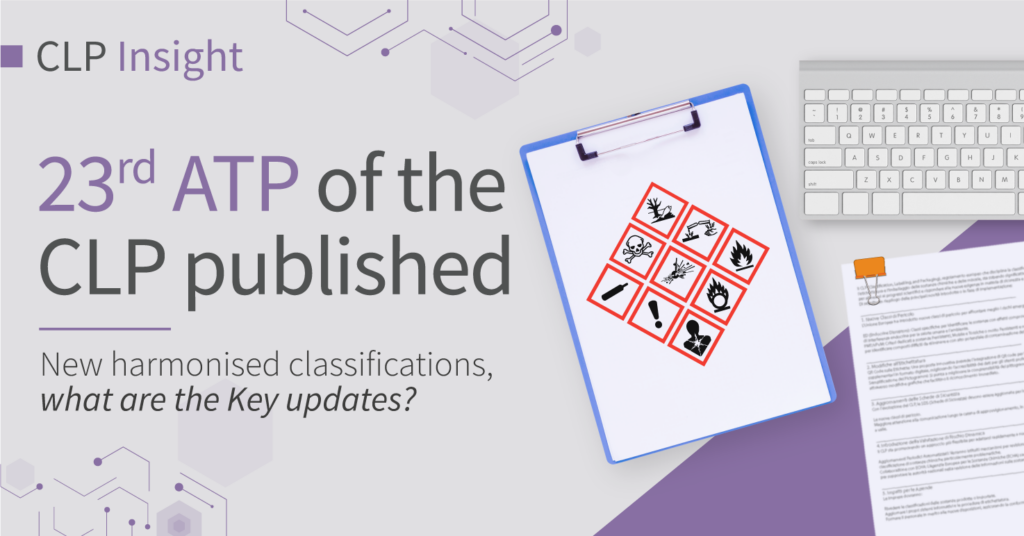By Ziannah Pasion
On 20 June 2025, Delegated Regulation (EU) 2025/1222 was published in the Official Journal of the EU. It amends Annex VI, Part 3, Table 3 of the CLP Regulation (Regulation (EC) No 1272/2008), introducing new harmonised classifications for a broad range of chemical substances, updating existing entries, and replacing outdated classifications.
Substances added to the harmonised classification list
Among the newly listed substances are:
- Nitrous oxide – classified as toxic to the nervous system, with reproductive toxicity and ozone layer effects (H372, H360Df, H420).
- Ozone – classified as an oxidising gas and carcinogen, highly toxic by inhalation, with specific effects on the nervous, respiratory, and cardiovascular systems, and very toxic to the aquatic environment (H270, H330, H351, H370, H372, H410).
- Extracts of Chrysanthemum cinerariaefolium – both those obtained via hydrocarbon solvents and supercritical CO₂, now classified as acutely toxic, neurotoxic, sensitising, and hazardous to the aquatic environment (H332, H302, H370, H373, H317, H410).
- Fluoroethylene, DBDCB, Trimethyl phosphate, 2-methyl-2H-isothiazol-3-one hydrochloride – all classified with severe hazards for human health and the environment.
- Other notable examples: tetrahydrofurfuryl methacrylate, 2,3-epoxypropyl isopropyl ether, tetrairon tris(pyrophosphate), α-methylstyrene, Pigment Red 53:1, proquinazid, 3-iodo-2-propynyl butylcarbamate.
Substances with updated classifications
The regulation does not remove substances from the harmonised classification list, but replaces certain previous entries based on new scientific opinions from ECHA’s RAC committee:
- 2-Phenylpropene (α-methylstyrene) – now includes category 2 carcinogenicity and category 1B skin sensitisation.
- 1,1-Dichloroethylene (vinylidene chloride) – now classified as category 1B carcinogen, mutagen, acutely toxic by inhalation (category 1), acutely toxic if swallowed, toxic to the aquatic environment, and harmful to respiratory tract, kidneys, and liver (H350, H341, H330, H301, H412, H372).
- Isophorone di-isocyanate – now classified in category 1A for skin sensitisation, with the classification threshold lowered from 0.5% to 0.001%.
- Petoxamide, Folpet, Captan, Clopyralid, 3-iodo-2-propynyl butylcarbamate, Proquinazid – all with updated hazard categories and exposure parameters.
Implementation and Deadlines
- The regulation will enter into force 20 days after publication (early July 2025).
- It will become mandatory from 1 February 2027, but suppliers may voluntarily apply the new classifications starting from the date of entry into force.
Click here to download the regulation: https://eur-lex.europa.eu/legal-content/IT/TXT/?uri=CELEX%3A32025R1222&qid=1750671142774



